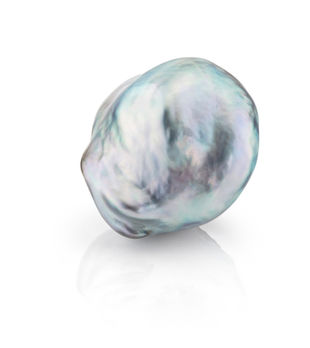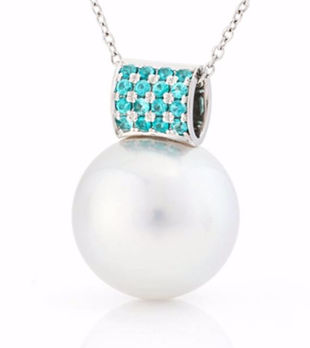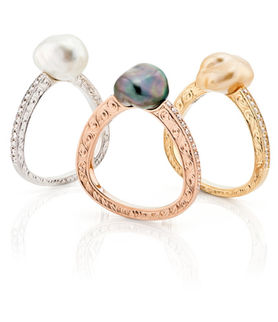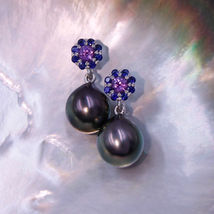
WORLD CLASS PEARLS
Rare pearls are one of Daniel's specialties. With years of experience and selective buying, he has curated a world-class collection of both natural and cultured pearls. Here, you can find an overview of the types of pearls Daniel offers. He maintains a large inventory, and if a specific type of pearl is not available, Daniel can source it on one of his many journeys around the world.
For more information, please contact

Parels
Parels zijn een van onze specialiteiten. Wij vliegen 2 keer per jaar naar Azië om deze zelf van de parelkwekers te kopen. In de collectie hebben wij alle soorten die er zijn zoals; Tahiti parels, Gouden zuid zee parels ,Vietnamese en uiteraard Japanse Akoya parels. Ook beschikken wij, als een van de weinigen in Nederland over een collectie natuurlijke parels. Hierbij kunt u o.a. denken aan Abalone en Conch parels. Door onze jarenlange ervaring en zorgvuldig opgebouwde verzameling kunnen wij u een unieke collectie natuurlijke parels aanbieden.
Hieronder ziet u een aantal van de parels uit onze collectie:
Voor meer informatie over handgemaakte parel juwelen kunt u contact opnemen via: info@danielmoesker.com
ABALONE PEARLS
Abalone pearls come from marine gastropods of the genus Haliotis, recognised for their distinctive bowl-shaped shells marked by a row of holes along one side. Among the most celebrated varieties are the Red Abalone of California, the Green Abalone from the Pacific coasts of California and Mexico, and the Paua Abalone of New Zealand. Abalone shells are highly prized for their extraordinary iridescence in shades of blue, green, pink, silver, orange, and lavender. True gem quality abalone pearls, however, are exceedingly rare, with nearly round shapes being especially uncommon. Most are found as baroque or blister pearls, their form largely determined by where they develop within the shell. Today, abalone pearls are cultured in several parts of the world, though in places like New Zealand they are still traditionally collected from wild abalone through free diving.
SOUTH SEA PEARLS
Produced by the Silver-Lipped Pearl Oyster of Australia and the Gold-Lipped Oyster of Indonesia and the Philippines, known as the world’s largest Pearl Oyster. The variety of these saltwater pearls range from white, gold and silver-grey, sourced from the eastern Indian Ocean to the tropical western Pacific, along with a silver-pink variety from Myanmar (Burma). With only a single pearl produced at a time, these pearl are prized for their satiny lustre, thick nacre and striking colourations.
AKOYA
Often referred to as the "original cultured pearl", Japanese Akoya pearls are grown in the Pinctada Fucata Oyster, a small mollusk measuring just 8–10 cm and native to the waters of Japan, China, and Vietnam. These pearls typically measure 2–10 mm in diameter and are admired for their exceptional luster, a result of their fine nacre and cultivation in cool waters. Their natural colours range from white to soft yellow, with beautiful overtones of pink, silver, cream, blue, or green. After harvesting, Akoya pearls undergo a traditional refining process known as Maeshori, a series of gentle treatments including cleaning, light bleaching, and polishing, to bring out their signature brilliance.
FRESHWATER PEARLS
Freshwater pearls are among the most widely cultivated varieties, admired for their warm luster and remarkable diversity. They are produced by freshwater mussels, most notably the Triangleshell, farmed extensively in China. Unlike saltwater oysters, a single mussel is able to yield over 40 pearls at once, making them more abundant and accessible. These pearls come in a variety of pastel colours, from white, pink, and orange to shades of lavender, salmon, purple, green, and bronze, and in shapes ranging from organic baroques to near-rounds. Yet, a perfectly round freshwater pearl of exceptional luster remains a rare treasure, cherished by collectors and connoisseurs alike.
KESHI
Often called “chance pearls”, Keshi pearls are rare and highly prized for their unique beauty. Formed as a by-product of pearl cultivation, they develop when the implanted graft is rejected by the oyster, allowing the pearl to grow freely into organic, baroque shapes.
Composed almost entirely of solid nacre, Keshi pearls are nearly indistinguishable from natural pearls, though they are still the result of cultured processes. Found in the waters of Tahiti, Australia, Indonesia, and the Philippines, Keshi pearls can grow up to 10 mm in size. Their rarity, luminous depth, and organic forms make them a truly captivating choice for jewellery.
TAHITIAN PEARLS
Often referred to as "Black Pearls," these are saltwater pearls that range from grey to black with overtones of green, blue, or rose. They are produced by the Black-Lipped Pearl Oyster and are primarily found throughout the Indian Ocean and the western to Central Pacific. Known for their mirror-like lustre, these pearls are prized for their unique beauty and captivating sheen.
CONCH PEARLS
Conch pearls are produced by the Queen Conch, one of the largest living herbivorous sea snails, recognisable for its distinctive spiral shell with a flared lip. Found in the waters of South Florida, Bermuda, the Caribbean, and parts of Central and South America, these pearls are among the rarest natural gemstones in the world. Unlike traditional pearls, conch pearls are non-nacreous. Instead, they display a silky, porcelain-like luster and a distinctive flame-like “chatoyancy” that sets them apart. Their colours range from sunset pinks to warm golds, from delicate blush to deep salmon and magenta, as well as white, beige, and lavender. Shapes are typically irregular and most often oval. Due to overharvesting in the past, the Queen Conch is now protected in many regions, and conch pearls remain exclusively natural and not cultured. This rarity, combined with their striking beauty, makes them among the most coveted and collectible gems in the world.
Bespoke Pearl Jewellery
Discover the unique pearl pieces we’ve crafted for our clients, each one a testament to artistry, care, and enduring beauty.
















































